Epoxy Resin countertops are gaining in popularity. I’ve lived with my perimeter epoxy counters and backsplash for well over a year now and I still adore them!
This post might contain affiliate links…see my disclosure here.
I finally got around to doing my island countertop. I love my dark island top to match the paint on my cabinetry, not an exact color match, just dark.
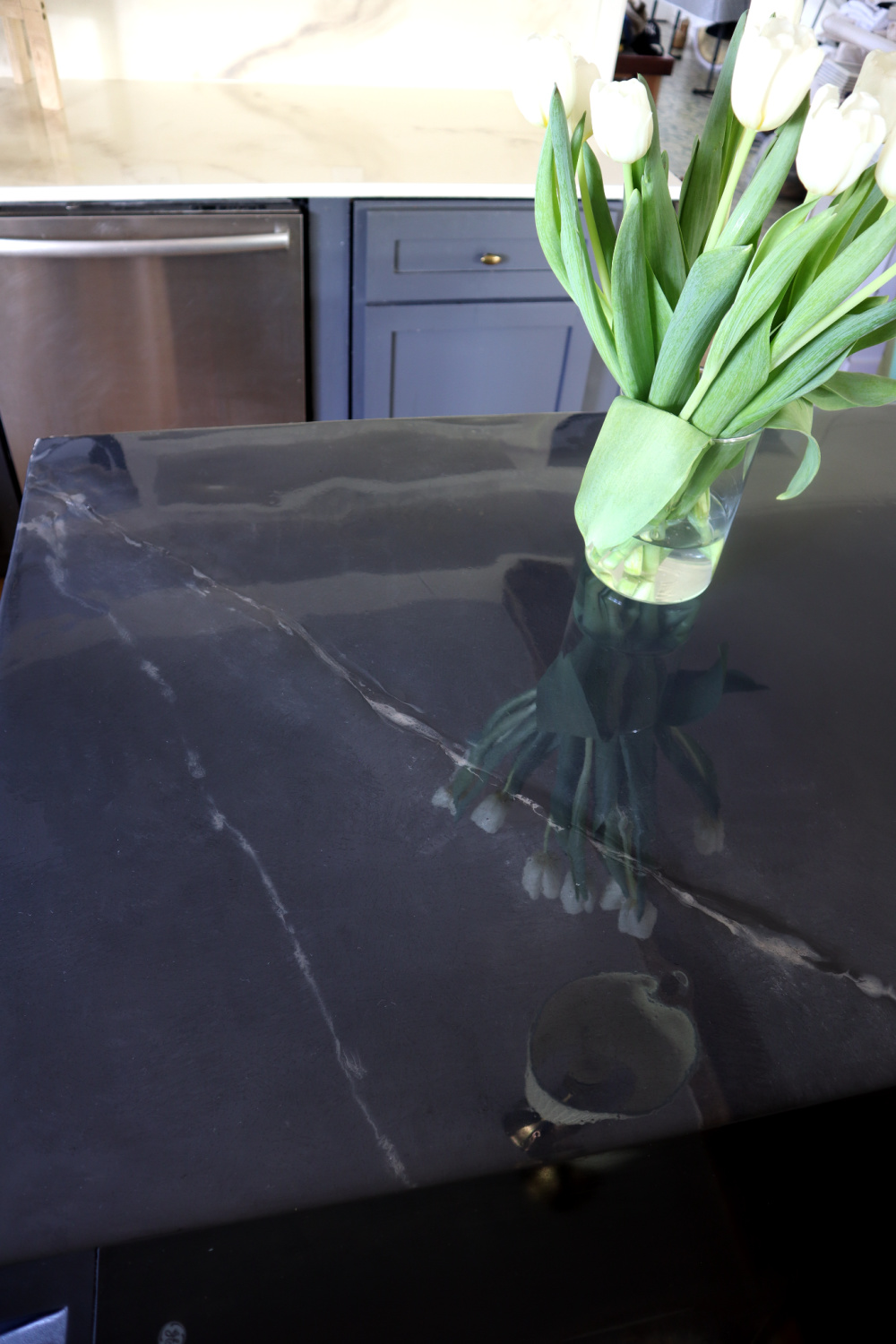 The previous finish on my island countertop was also dark, it was made of plywood and concrete feather finish, and sealed with oil based polyurethane. It held up really well in my very active kitchen. However, it was starting to look warn out and I was planning to change it to an epoxy finish ever since I did the perimeter counters.
The previous finish on my island countertop was also dark, it was made of plywood and concrete feather finish, and sealed with oil based polyurethane. It held up really well in my very active kitchen. However, it was starting to look warn out and I was planning to change it to an epoxy finish ever since I did the perimeter counters.
So when @Total Boat reached out to me and gifted me a counter top epoxy kit , the island countertop skipped right to the top of my to-do list. 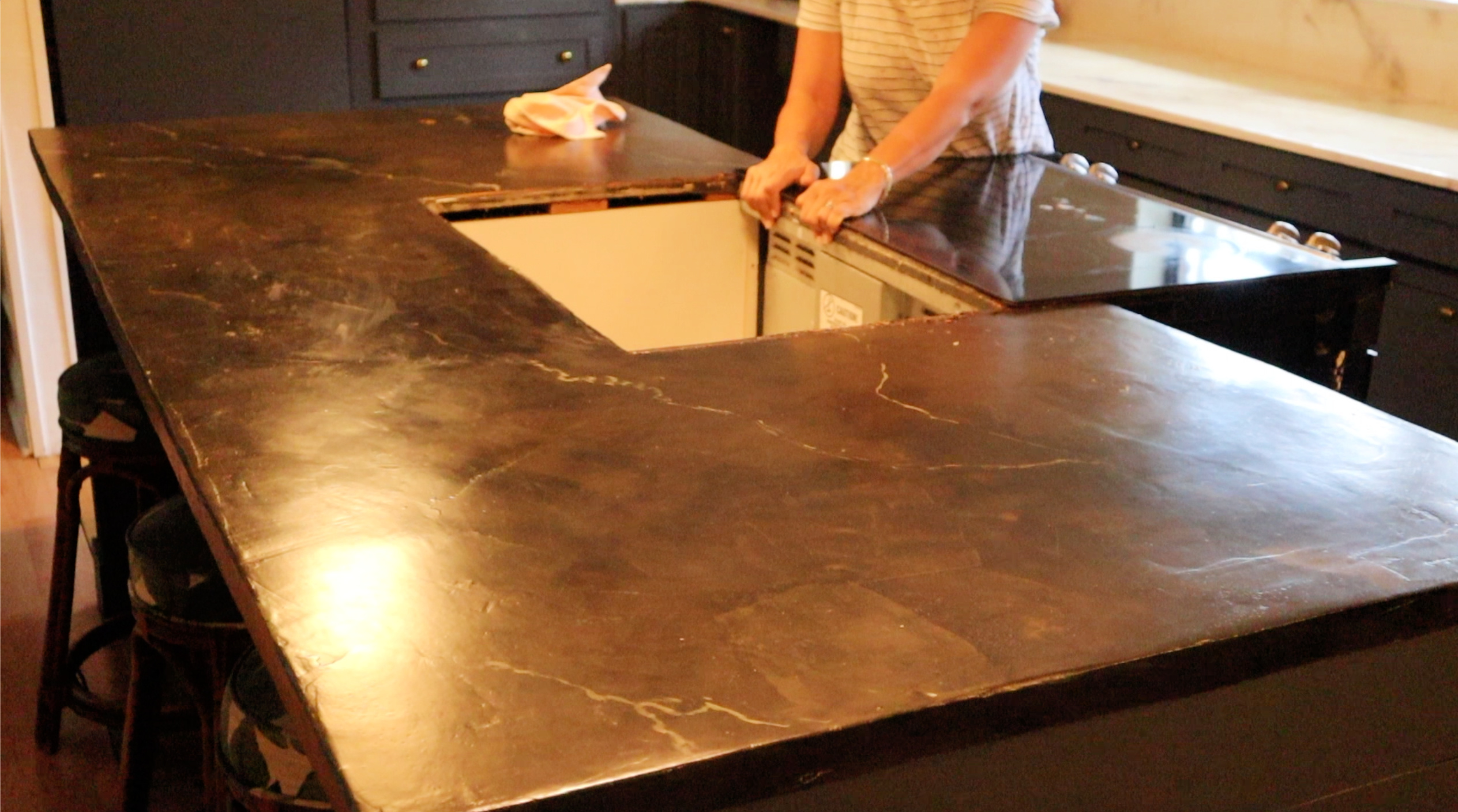 Since I needed to give my countertop a thorough sanding, I removed it completely and took it outside. I would’ve left it in place if it only needed a light sanding.
Since I needed to give my countertop a thorough sanding, I removed it completely and took it outside. I would’ve left it in place if it only needed a light sanding. 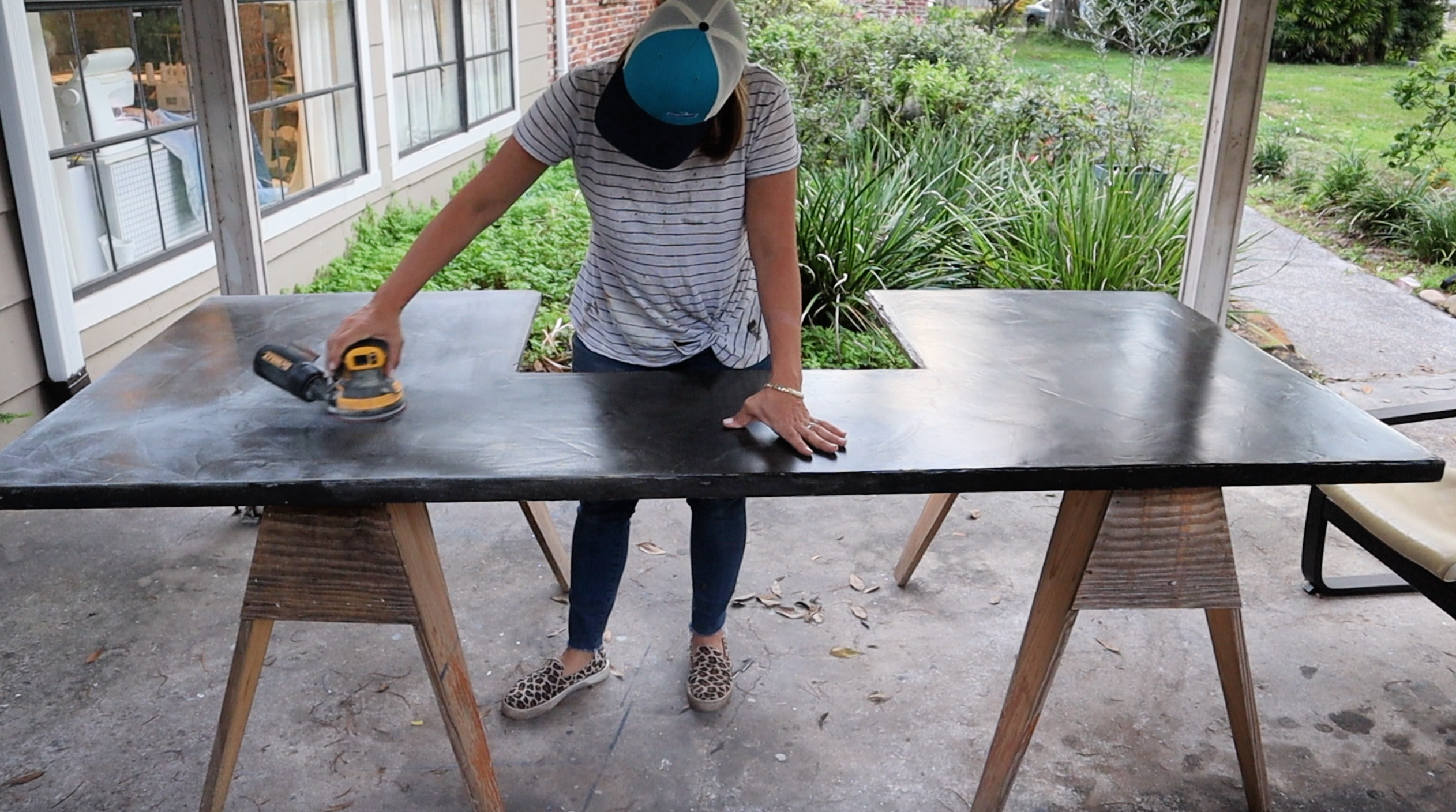 My intention was to completely sand through the polyurethane, but after a good bit of sanding I realized that was a little ambitious. So I just gave it good once over, and brought back into my kitchen for primer.
My intention was to completely sand through the polyurethane, but after a good bit of sanding I realized that was a little ambitious. So I just gave it good once over, and brought back into my kitchen for primer.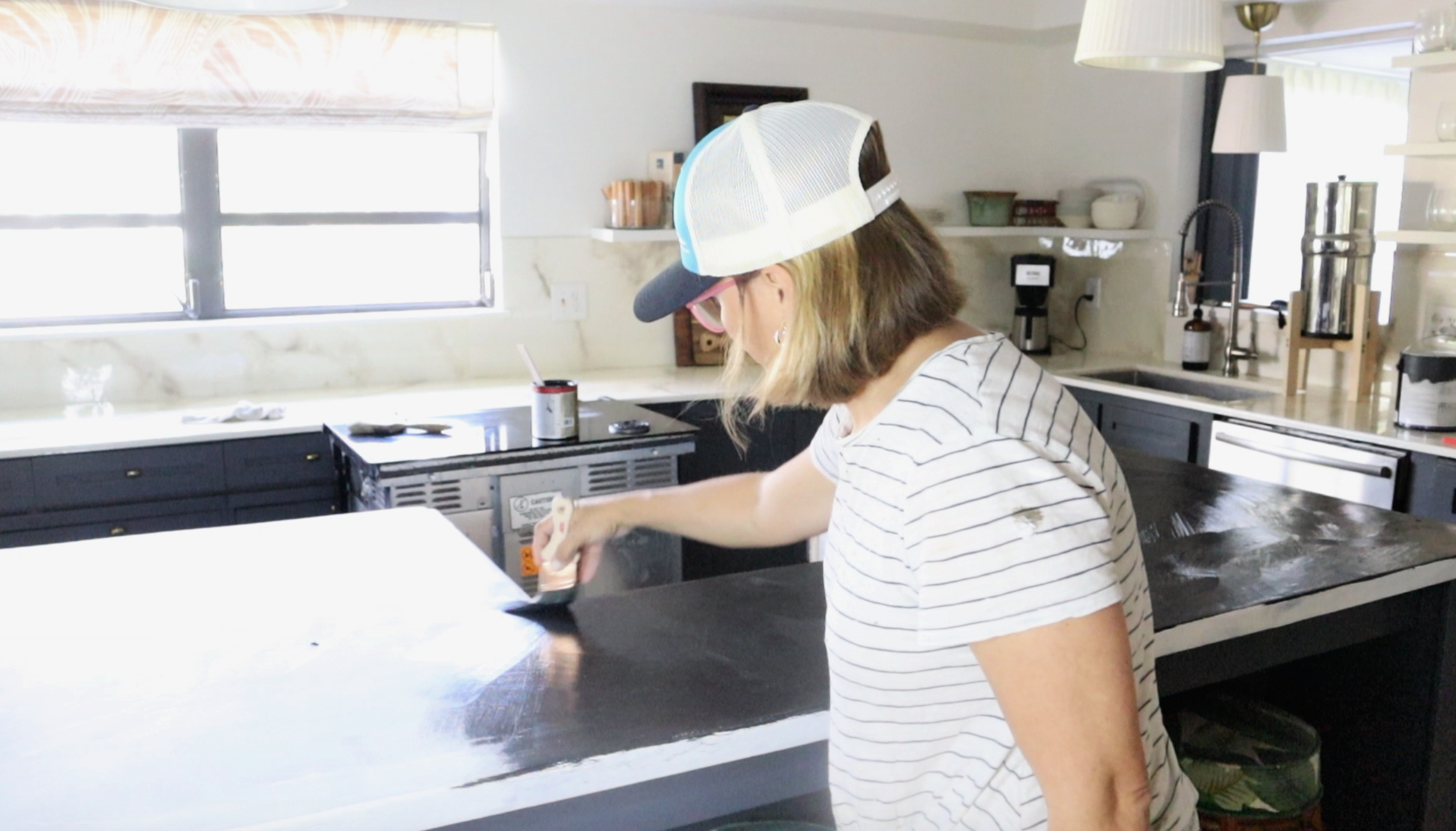 I painted one coat of BIN shellac based high bonding primer. The shellac primer is THE BEST high bonding primer and the only primer that will stick to laminate and Ikea furniture.
I painted one coat of BIN shellac based high bonding primer. The shellac primer is THE BEST high bonding primer and the only primer that will stick to laminate and Ikea furniture.
Then I painted over the primer with one coat of regular latex house paint in a shade of black called Graphic charcoal by Behr.
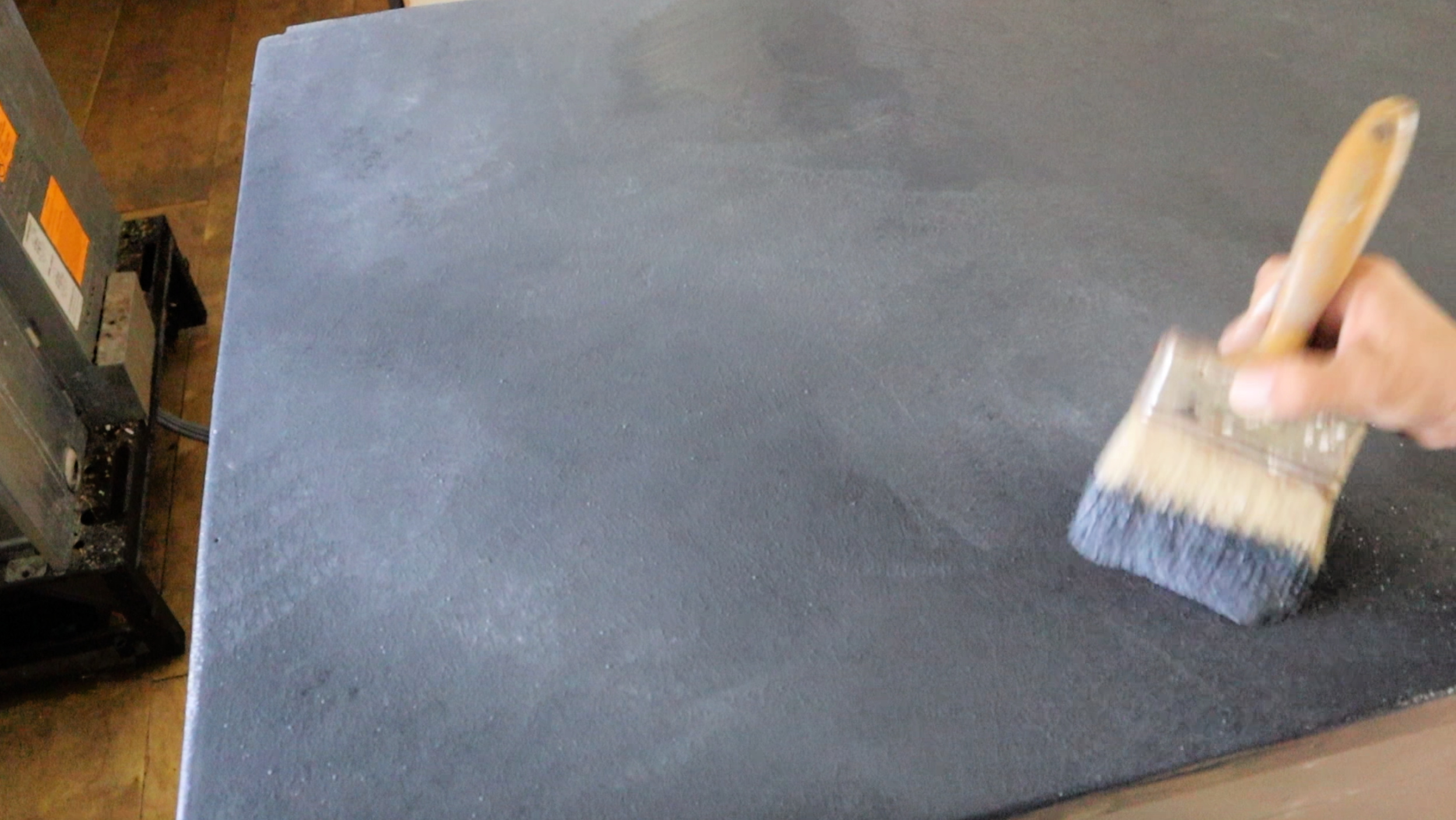 The next step is where I differ from most epoxy tutorials. I used regular latex/acrylic artist paint to give the whole countertop a soapstone look. I mixed black and white paint on my brush and stippled the countertop with a dry brush to make it look mottled, like soapstone.
The next step is where I differ from most epoxy tutorials. I used regular latex/acrylic artist paint to give the whole countertop a soapstone look. I mixed black and white paint on my brush and stippled the countertop with a dry brush to make it look mottled, like soapstone.
I did this because I’m an experienced painter and I know how to work with paint to get the exact effect I want. Epoxy is a different story …it kinda does what it wants. And since I’m fairly new to epoxy I don’t know all the tricks of the trade. I love most of the epoxy results, but some look like a bowling ball and I didn’t want the bowling ball look. I like my counters to look as authentic as possible. And subtle…not too much movement. 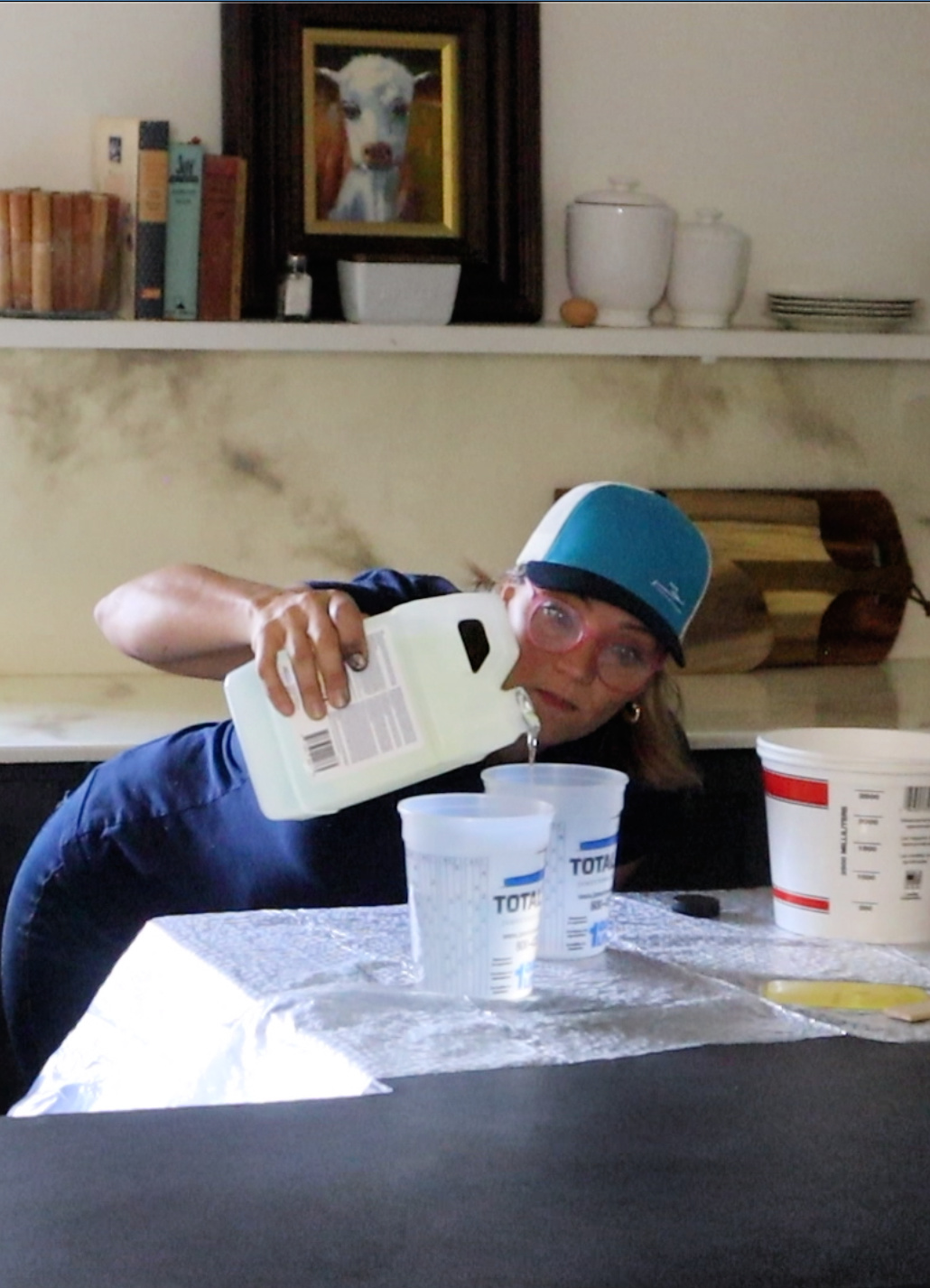 Mixing the epoxy is the first and probably the most important step. The countertop kit is a 1:1 ratio. It must be exactly 1:1. Don’t skimp on buckets for mixing. Buy a bucket for each part, the resin and the cure. And make sure the bucket your pouring into is big enough and has flat sides so you can scrape the sides while mixing.
Mixing the epoxy is the first and probably the most important step. The countertop kit is a 1:1 ratio. It must be exactly 1:1. Don’t skimp on buckets for mixing. Buy a bucket for each part, the resin and the cure. And make sure the bucket your pouring into is big enough and has flat sides so you can scrape the sides while mixing.
It’s also very important that your resin and cure is at the proper temperature…check the label. 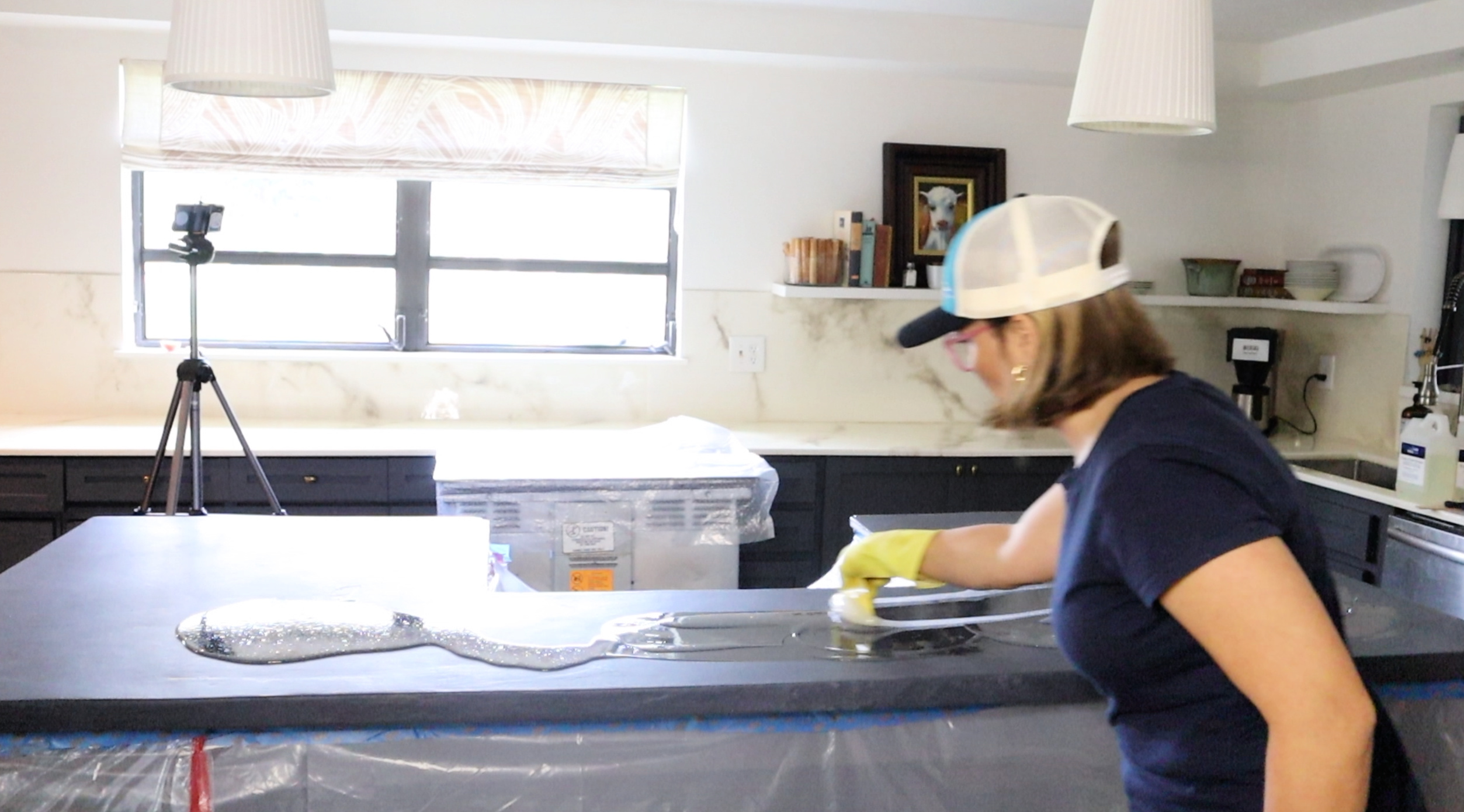 Once the two parts are mixed thoroughly, dump it all out onto your countertop scraping the sides of your bucket. Then using your spatula, mix the epoxy a little more on the countertop particularly the last bit out of the bucket, in case it didn’t completely mix in the bucket.
Once the two parts are mixed thoroughly, dump it all out onto your countertop scraping the sides of your bucket. Then using your spatula, mix the epoxy a little more on the countertop particularly the last bit out of the bucket, in case it didn’t completely mix in the bucket.
Spread the epoxy over the entire countertop to within 2″ or so from the edge. Once the epoxy is covering the whole surface, then begin to spread the epoxy to the edge, letting it flow over the edge of the countertop.
The edges are last because the epoxy will have time to set up a bit and not flow so freely. If you let the epoxy flow over the edges right away you’ll lose a lot of epoxy to the floor and the epoxy on the edges of your countertop will be very thin.
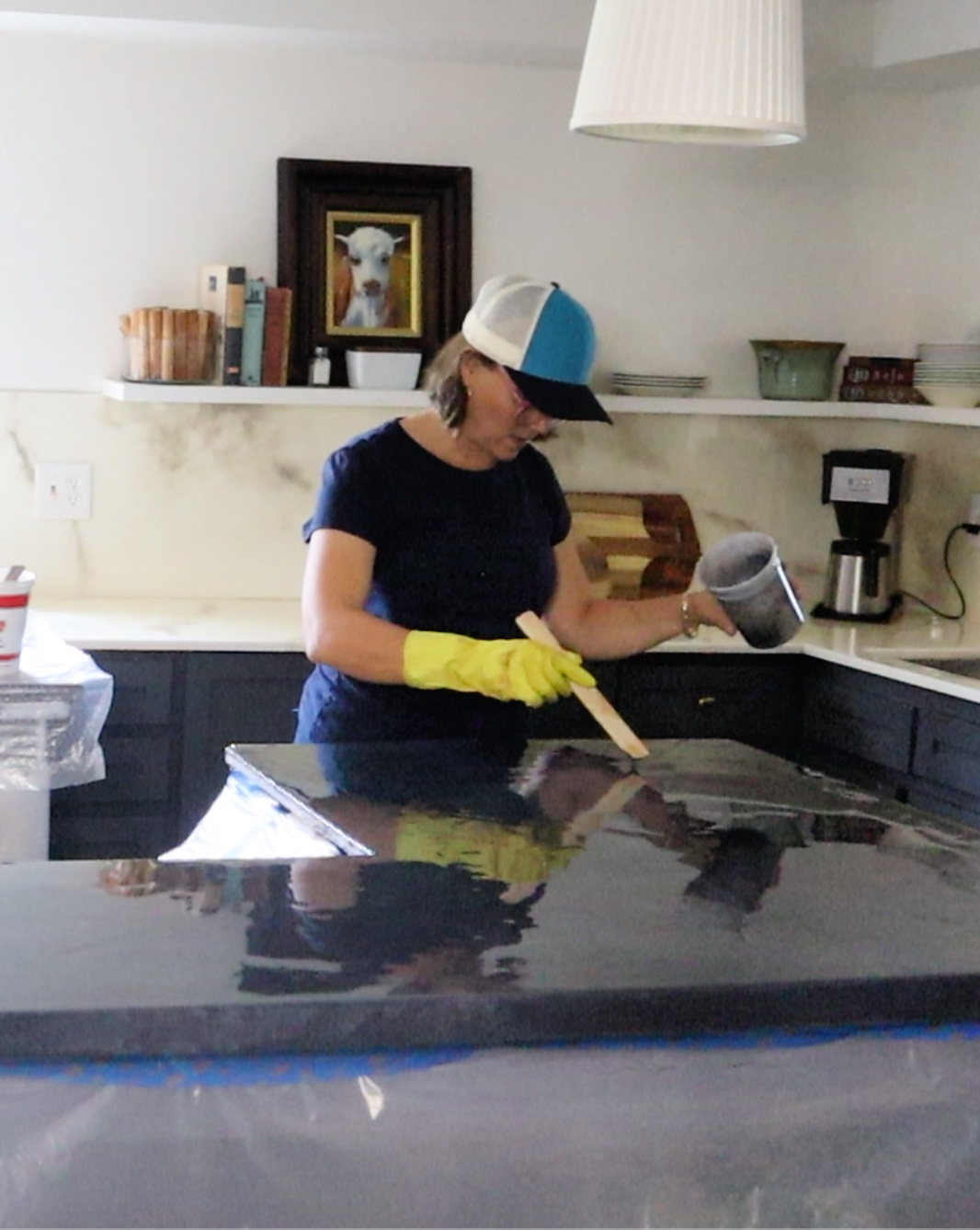 Time to apply the design. Since I used paint to give my countertop texture before pouring the epoxy, I only needed to add veins. For the veins you must use spray paint. NOT latex paint. The brand of spray paint doesn’t matter. You spray a pool of paint into a bucket, bowl, box, or whatever you have on hand, pick up a little epoxy with a paint stick, add some spray paint to the epoxy on the paint stick and drizzle it across the counter in a vein like pattern.
Time to apply the design. Since I used paint to give my countertop texture before pouring the epoxy, I only needed to add veins. For the veins you must use spray paint. NOT latex paint. The brand of spray paint doesn’t matter. You spray a pool of paint into a bucket, bowl, box, or whatever you have on hand, pick up a little epoxy with a paint stick, add some spray paint to the epoxy on the paint stick and drizzle it across the counter in a vein like pattern.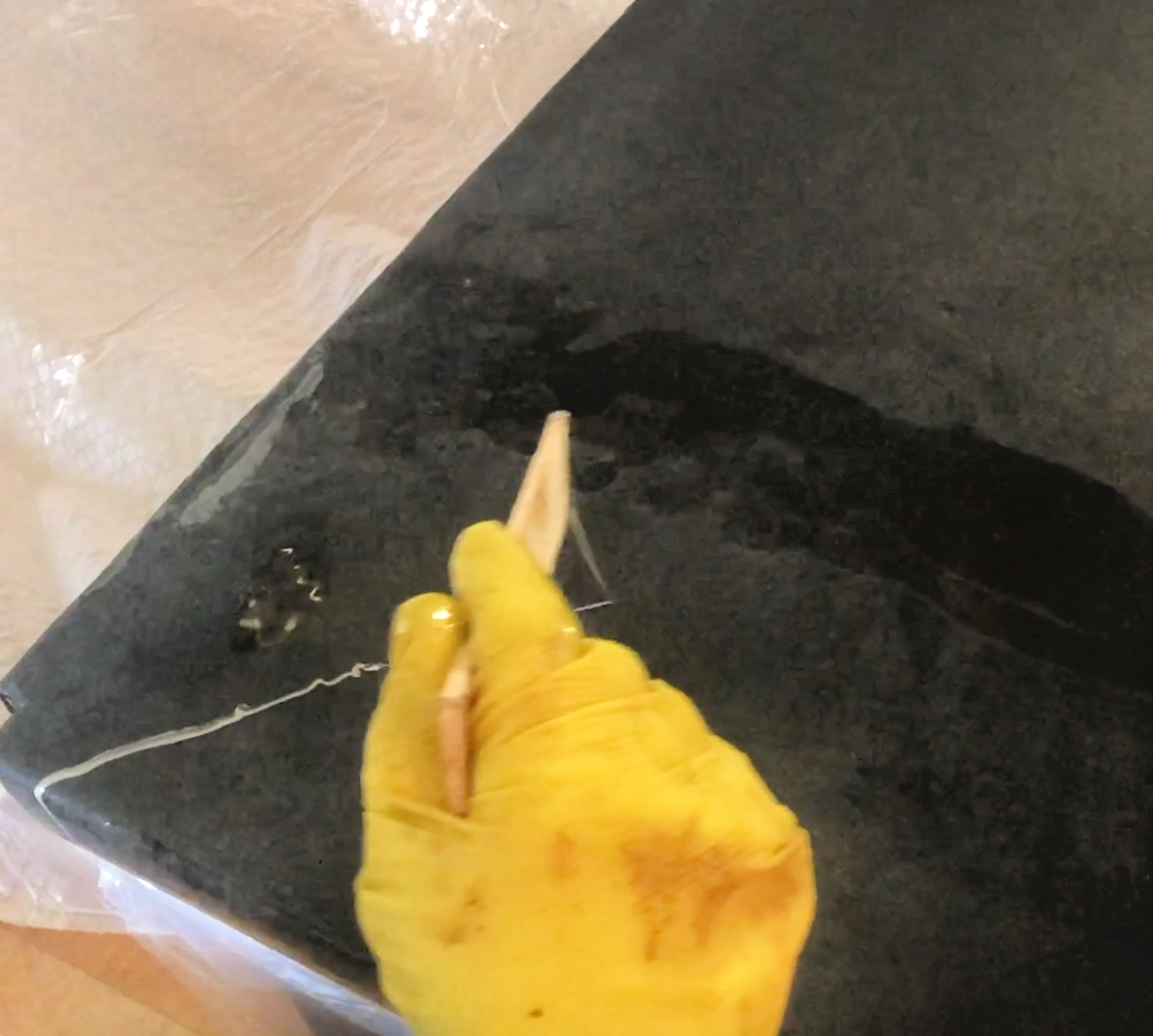 This part is completely subjective, but I would suggest looking at a lot of pictures of real stone to get an idea of what you want. I would maybe even print out pictures if you’re new to the process.
This part is completely subjective, but I would suggest looking at a lot of pictures of real stone to get an idea of what you want. I would maybe even print out pictures if you’re new to the process.
Sidenote: There’s a lot of ways to apply the color and design to epoxy to get so many various looks. Definitely check out videos on the subject. My perimeter counters and backsplash I used a little different technique. I chopped in the spray paint with a paint brush to make the color and pattern. Check out that video <HERE>
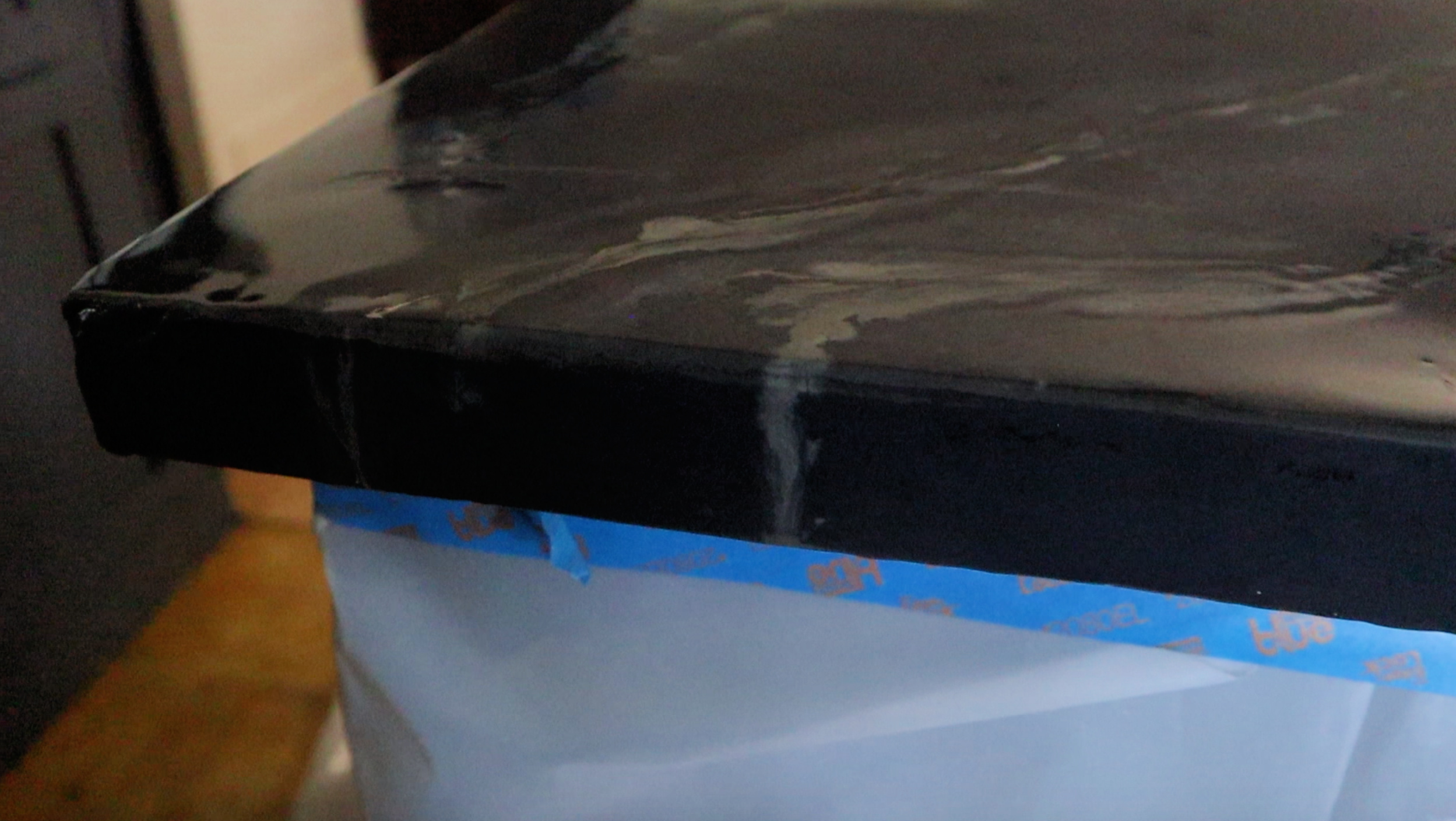 Take care to allow the color from the veins to drip over the edges at the start and finish of the veins to look more authentic.
Take care to allow the color from the veins to drip over the edges at the start and finish of the veins to look more authentic. Make sure the edges are smooth by brushing them with a brush, roller, or even your gloved finger. Then for about an hour after the epoxy is poured I used a paint stick to scrape the bottom of the counters to remove and epoxy drips.
Make sure the edges are smooth by brushing them with a brush, roller, or even your gloved finger. Then for about an hour after the epoxy is poured I used a paint stick to scrape the bottom of the counters to remove and epoxy drips.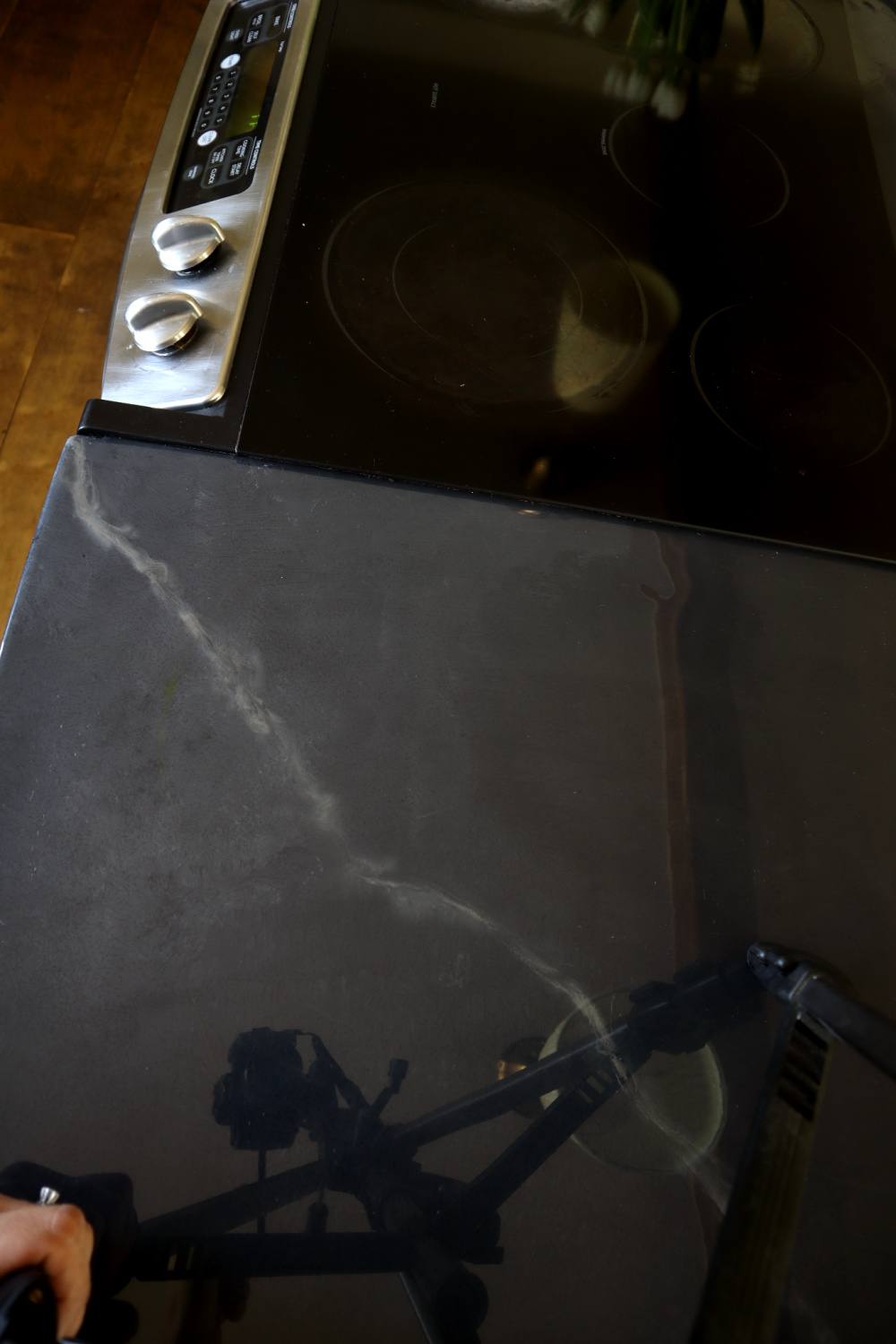 The last step is to go over the entire surface with a heat gun to pop the air bubbles and manipulate the vein lines if desired.
The last step is to go over the entire surface with a heat gun to pop the air bubbles and manipulate the vein lines if desired. 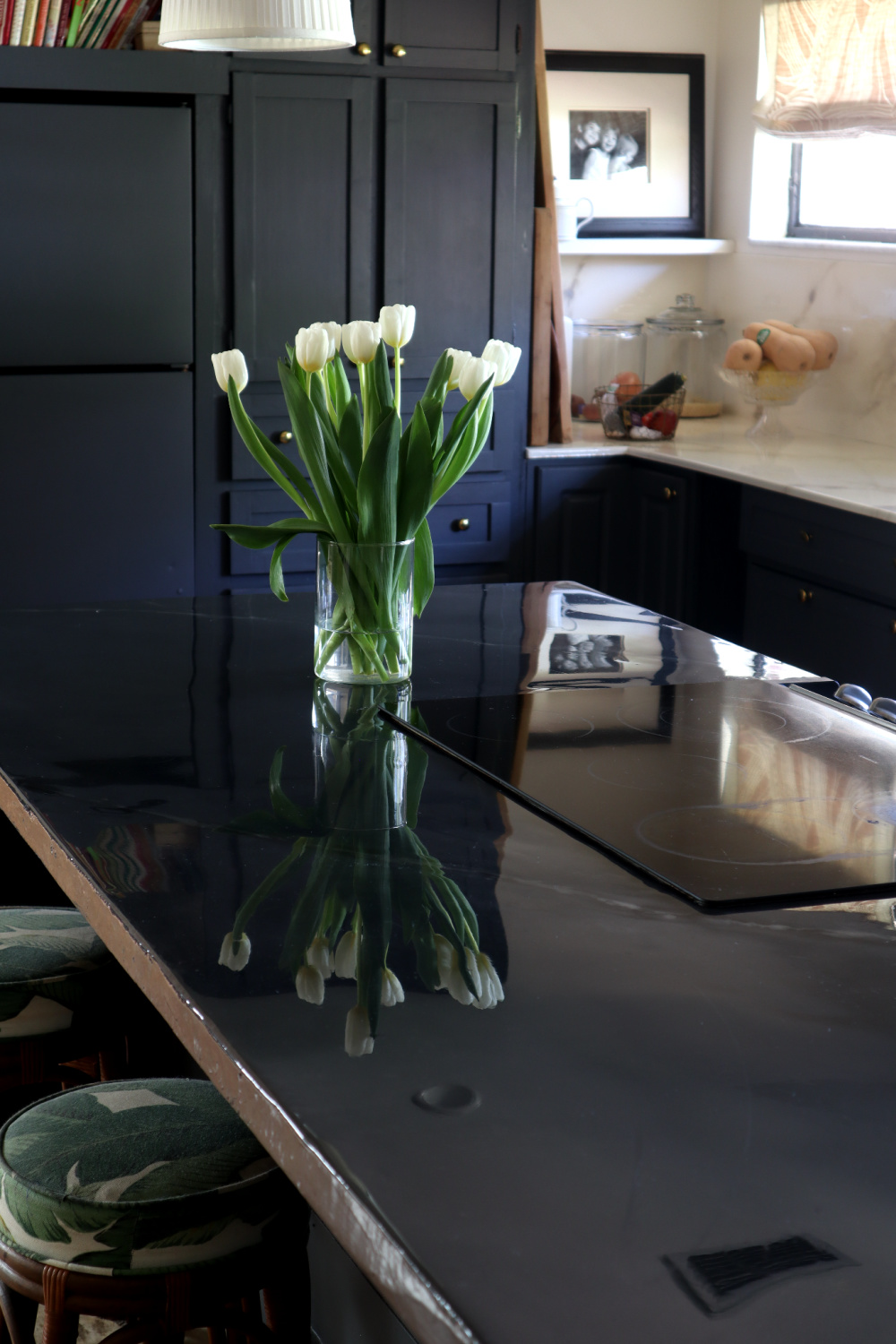 My island is just about finished, my plan is to sand this epoxy with 400 grit sandpaper to make it matte like REAL soapstone, or possibly buy the matte finish sealer sold by StoneCoat counters. Not sure yet, and for now I’m living with the super high gloss finish until I gather the courage to sand.
My island is just about finished, my plan is to sand this epoxy with 400 grit sandpaper to make it matte like REAL soapstone, or possibly buy the matte finish sealer sold by StoneCoat counters. Not sure yet, and for now I’m living with the super high gloss finish until I gather the courage to sand.
If you’re thinking of tackling an epoxy countertop take a look at the video…There’s a ton of useful tips and tricks to get the job done right. And by no means is this blog post an exhaustive tutorial on how to pour epoxy counters. By all means check out many sources for tips and tricks.
I can honestly say that I love my epoxy counters. They’re durable, easy to clean, look great, and make me happy. They’re not REAL stone, but for the price of a night out, they 100% are worth the time and effort.
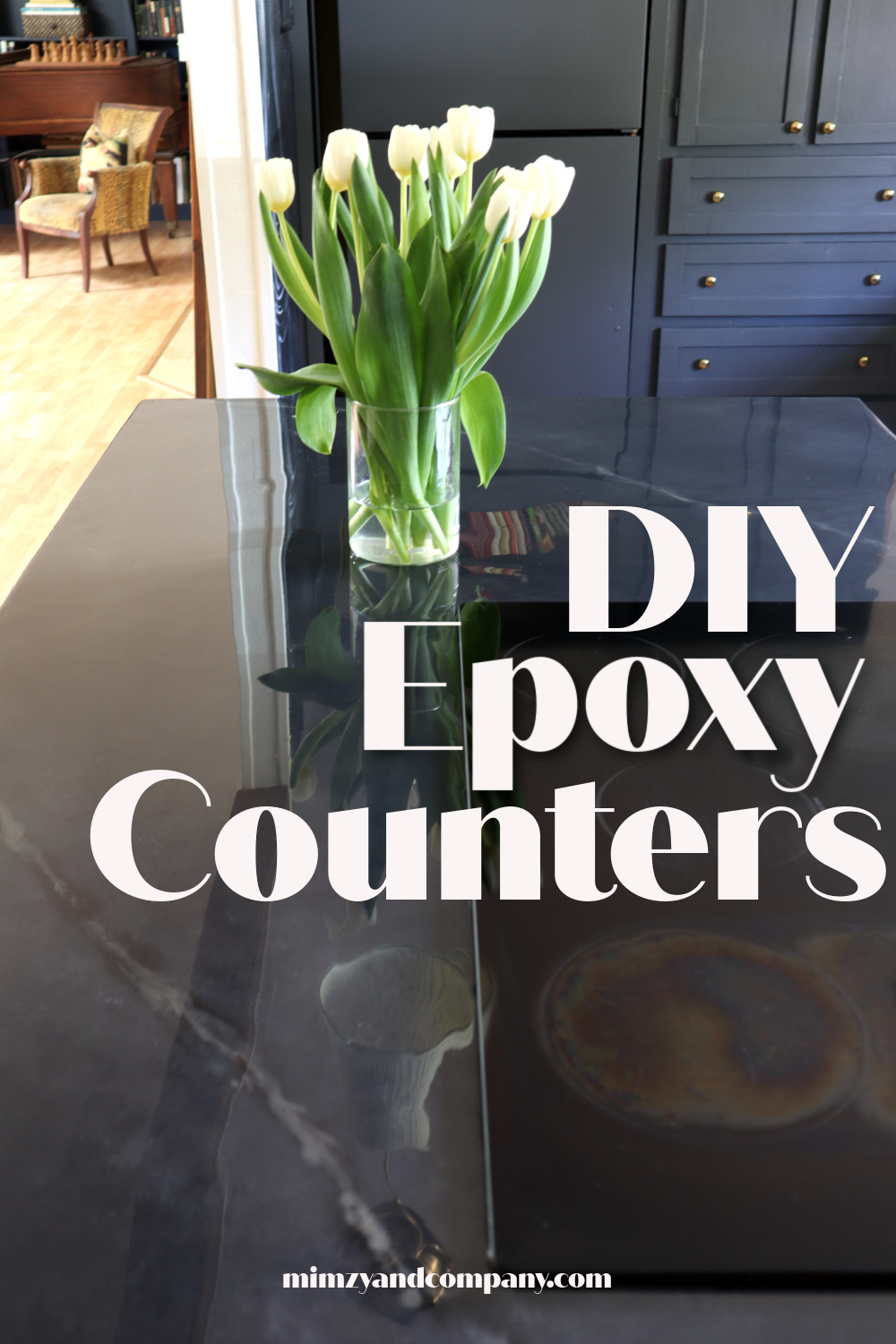

 Jai says
Jai says
May 9, 2021 at 4:39 amHow much epoxy did you use? And what brand? I stone sprayed the bathroom counter and I am wanting to smooth it out and seal it.
 katie says
katie says
March 9, 2021 at 10:42 pmOh my goodness! I’ve watched your counter video *so* many times, and have said over and over to myself, “I wish she had a soapstone video too!” Elated to find this new one. You’ve given me the courage to go for it! Do you happen to know if the matte finish sealer goes right over the other without sanding, or do you sand first. Debating the two finish options. My concern with sanding is if it increases staining. My kids do art at the island all the time.